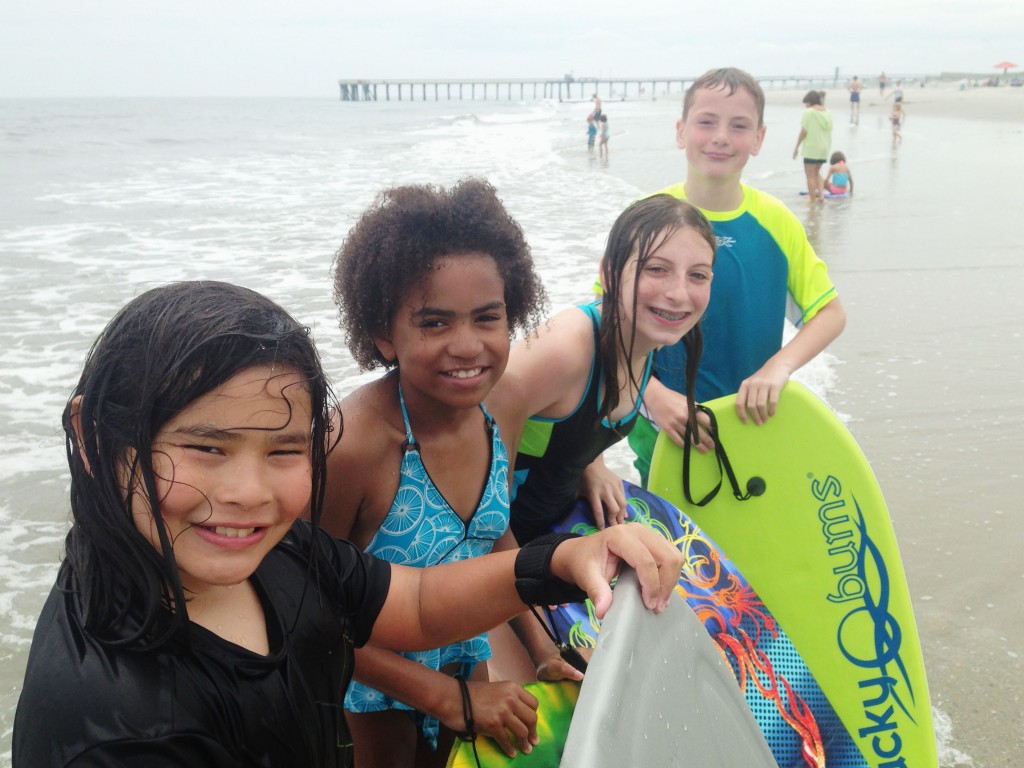By Damien Ruffner, School Programs Manager
June 29th, 2007 changed the world forever: This is not the date of a presidential election, or the start or end of a military conflict. It’s not the day humans first traveled into space, or discovered some profound scientific theory. Think smaller, about 4 inches to be exact. It’s the date the first iPhone was released. And here we are, one decade into the smartphone generation.
The aspect of my position at the Schuylkill Center that takes up the most time every year is the Adventure Treks summer camp program, and specifically the 10-12 year old camp group. This means this upcoming summer, for the first time, I’m going to have kids coming to my most popular program that have never existed in a world without a smartphone. Older generations are in a constant struggle with these kids and their blasted phones. “Put those away!” “Am I going to have to confiscate that?” “No phones will be allowed on this trip.”
I’ll admit that I am guilty of saying a few of these phrases in my career as an educator. But is it the right way? It’s a question I struggle with constantly. If a 10 year-old comes to camp this year with a phone, how can I tell him or her that they can’t have it? Their whole life has been integrated with this device. It’s used in schools. Complicated schedules are logged and tracked. They have pictures of their friends, contact information for their parents or guardians. It’s a 21st century security blanket. Think about it like this: What if you went to a camp and the person in charge said there was going to be no running water or indoor bathrooms at this camp. And it’s simply that way because whoever was in charge didn’t have running water at camp when they were younger, and neither should you. In other words, it’s the “right” way to experience summer camp. Things have changed, and as educators, we have to adapt.
Teaching a few facts about a particular subject is a thing of the past. If a school group comes here to the Schuylkill Center and we find a snake, any child can pull up a device and find more facts about that particular species than I could ever hope to know. Anyone can find what it eats, where it lives, and how old they can live in wild. The list goes on and on about the factoids of information that are available to them. To counter this, during my career I’ve shifted to a more experienced-based approach to education.
I give children experiences that they will never be able to have on a smart device. There is no app that can duplicate the feeling of sand eroding around your feet as the waves wash around you. No iPad can give someone the rush that they get right before they step off a platform 90 feet in the air to zipline though the canopy. No computer can replicate the sense of accomplishment after you and your friends navigated the rapids of Ohiopyle. If you are fortunate to have experienced any of these activates, you know exactly what I am talking about. Imagine that exact feeling of seeing whitewater for the first time. That combination of excitement, and fear that only the unknown can bring. And finally that sense of astonishment as you and your boat mates cheer and celebrate an amazing adventure.
If we make kids choose between technology and nature, technology will win. You can see that technology will win in every aspect of pop culture. Movies where the future is depicted, nature is few and far between. There are buildings built above the clouds, planet-wide cityscapes, and metal and concrete as far as the eye can see. The only time I see nature in future scenarios are in the dystopian future, one where humans are defeated by something. Can technology and the environment not coexist? Why does one have to be sacrificed in the sake of the other?
I don’t think it has to be that way. We can have both technology and nature. But we can’t force it. We can’t make them choose.
Technology can be an asset used to enhance an outdoor activity. A quick google search while on a trail can help you find a better path, or a wonderful swimming hole. Looking up reviews of outfitters can help you be more comfortable in trying a new activity, and in turn encourage families to actually go outside together. The tech world is becoming more “green” with every passing year and it only makes sense that our use of these products does as well.
I am all for having kids be separated from their devices. But I have to offer something in exchange. I don’t want kids to put away their phones just for the sake of putting away their phones. I want them to put them away so they can be fully engaged in what I have to offer. I want their full attention. I want all of their senses dedicated to the outdoors. I want their eyes fixated on the horizon, at that nebulous region where sky and ocean meet. Ears focused on gulls calling, waves crashing. Noses inhaling that mixture of salt and seaweed. Taste buds catching those trace amounts of salt on their lips after a few dives into the ocean. I want them to feel the saltwater dry on their skin as the sun peaks out from behind a cloud. I don’t want to tell them to put their phones away; I want them to do that on their own. By offering them something better.

